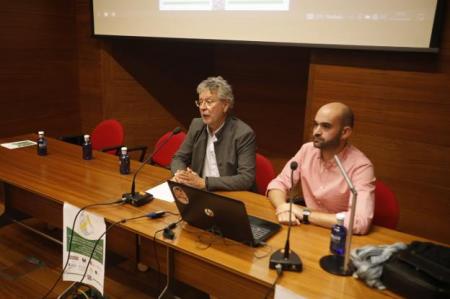News
|
Faro pottery appears throughout the north of the Iberian peninsula

RAFAEL FRANCÉS OVIEDO. Saturday, 22 October 2022, 01:52 AM The link between Faro pottery and Limanes is obvious, but the latest studies show that throughout the north of the peninsula "deposits are appearing thanks to a commercial expansion of this pottery in the 18th century". This was the opinion expressed yesterday by Miguel Busto Zapico, PhD from the University of Oviedo and specialist in modern ceramics, during a conference held at the Archaeological Museum of Asturias where the latest archaeological findings from the pottery centre of Faro de Limanes were presented. Researchers from several Spanish universities presented the most recent work and outlined the new lines to be followed in the study of this pottery. The conference is part of the project 'Rediscovering Faro de Limanes through Archaeometry', funded by the Principality and the University of Granada. The meeting was coordinated by Miguel Busto Zapico, Francisco Lara Piñera (UNED-Santander) and Javier García (University of the Basque Country), and the professor of Medieval Archaeology at the University of Oviedo, José Avelino Gutiérrez González, chaired the scientific meeting. Busto Zapico explained that advances in archaeology and archaeometry (chemical and physical analysis of the pottery pieces themselves) and, specifically, his own studies show that "the pieces made in Faro are for use at the table (plates, jugs, vases...) and that they have been on the tables (plates, jugs, glasses...). ) and that they have been on Asturian tables until very recently", that these pieces "were influenced by other European pieces and French, Portuguese or Dutch decorations were copied" and that "we are discovering how Faro pottery is appearing in sites all over the north of the peninsular thanks to a very important commercial expansion that was forged in the 18th century". Another guest speaker was the ethnographer Toño Huerta, who stressed that "we must bring Faro closer to the citizens and make the citizens themselves see it as their own because legal protection of this pottery is all very well, but the best protection is for the citizens to take it on as their own". The aim of this conference was to bring together researchers who have worked archaeologically on Faro and its pottery to report and discuss their progress. |


